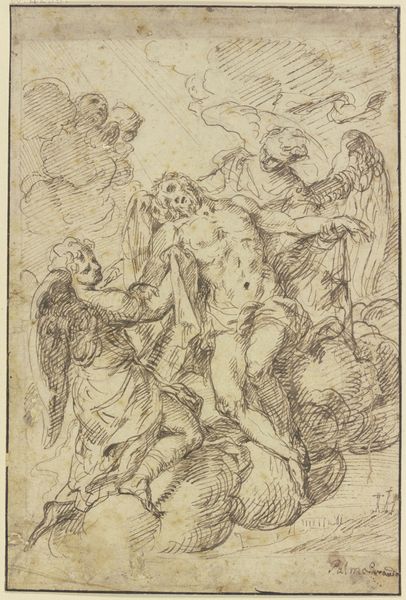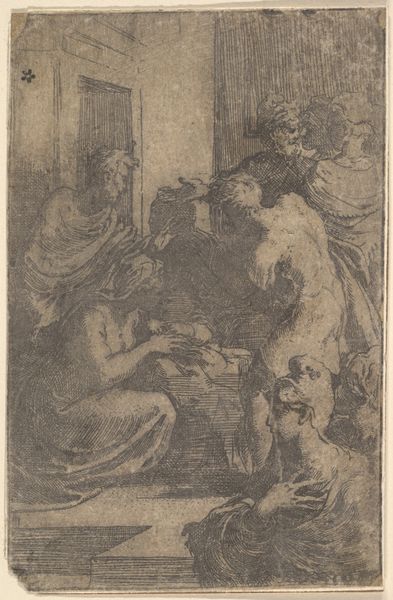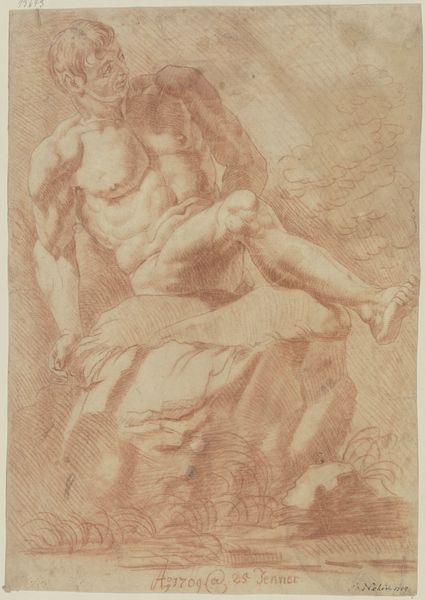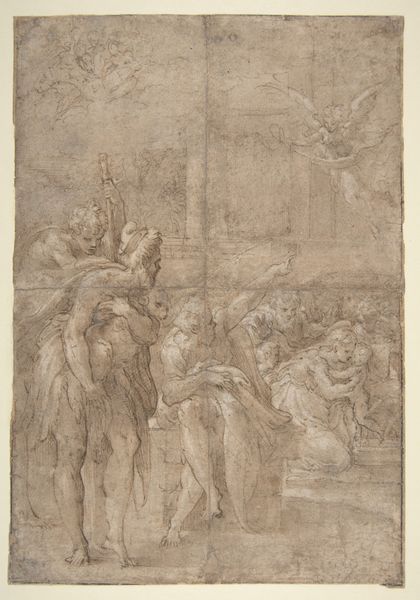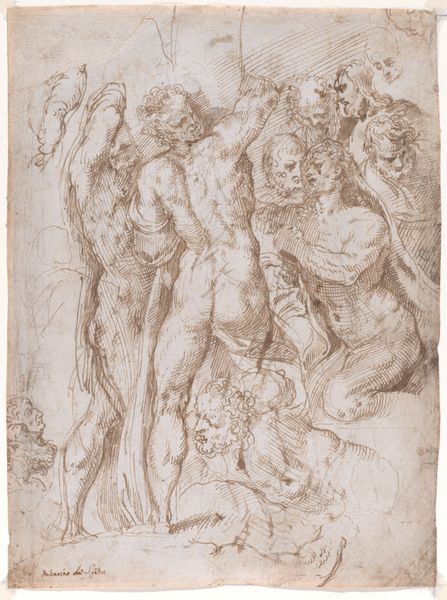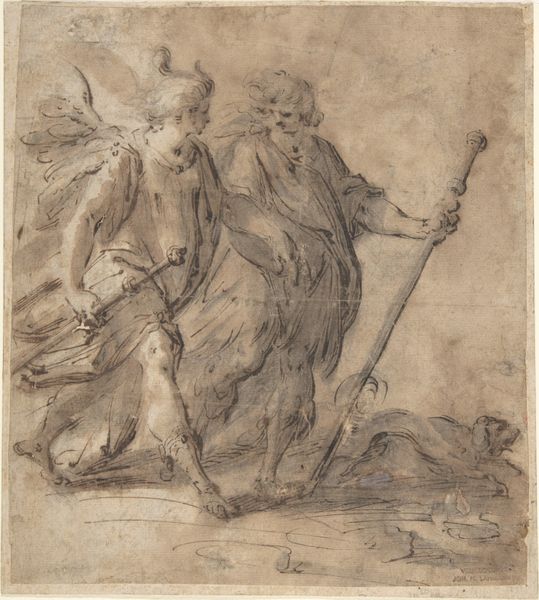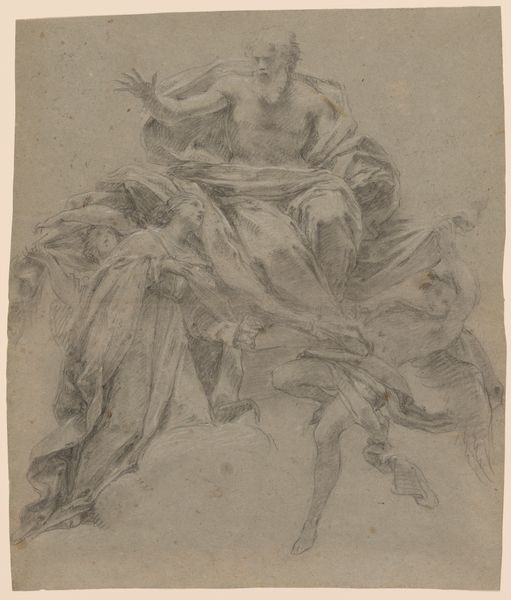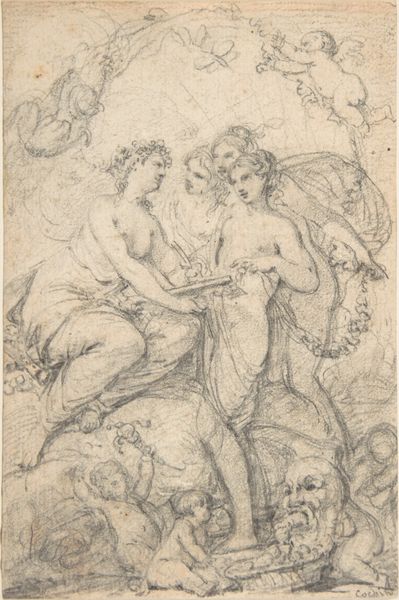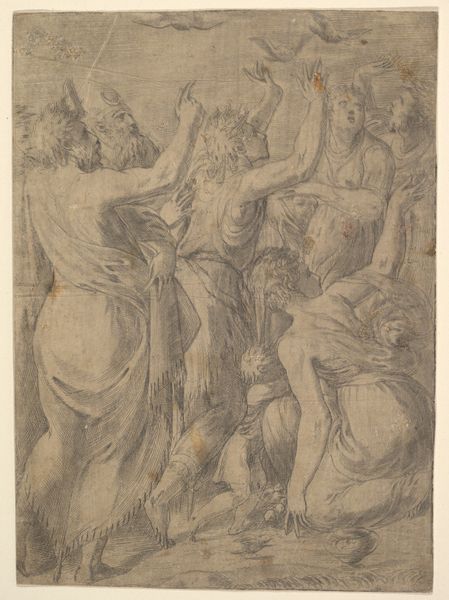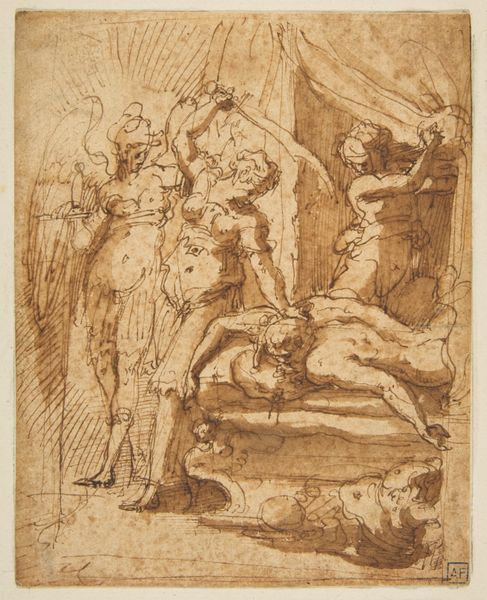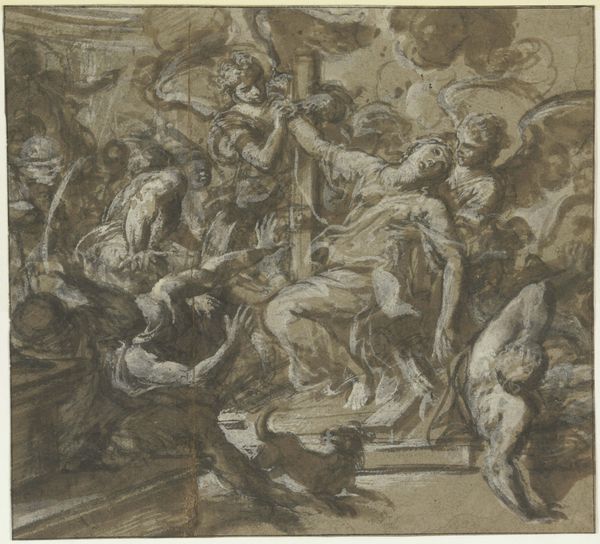
Bacchic revel with Silenus in the centre riding a goat 1535 - 1548
0:00
0:00
drawing, print, charcoal
#
drawing
# print
#
landscape
#
charcoal drawing
#
figuration
#
charcoal
#
history-painting
#
italian-renaissance
Dimensions: Sheet: 6 in. × 4 7/16 in. (15.2 × 11.2 cm)
Copyright: Public Domain
Curator: The dynamism of this charcoal drawing by Andrea Schiavone, created sometime between 1535 and 1548, practically leaps off the page! What's your initial read on it? Editor: It feels both chaotic and compelling. The scene bubbles with frenetic energy. There's a certain… wildness. Are these bacchanals I see before me? Curator: Precisely! The piece is titled "Bacchic revel with Silenus in the centre riding a goat." Schiavone captured the mythical world associated with Bacchus through charcoal and possibly other printmaking techniques. The scene presents a fascinating blend of classical mythology, artistic interpretation, and technique. Editor: What resonates is the figure of Silenus. He's presented, tell me more about his… goat conveyance! Does it relate to period anxieties, celebrations, anything social or political during the time? Curator: It definitely evokes certain socio-political considerations. Silenus, as Bacchus’ tutor and companion, usually represented wisdom and prophetic power gained through drunkenness. Putting him on a goat is an intriguing inversion, potentially mocking the authority figures of the time. Also, the revelry links it to festivals and release from societal norms that were important pressure valves. The lack of crisp lines in favor of atmospheric strokes adds to that abandonment. Editor: The emotional content really emerges in these swirling, chaotic charcoal marks. We are not invited to judge, but to participate. There are certainly gender dynamics at play that would reflect their period. I wonder if these ‘fetes galantes’ mirror events attended and experienced by patrons during the Italian Renaissance? Curator: Art often acts as a reflection of societal habits. One can read these images as indicators of a type of pleasure pursued during that period by patrons in court, and maybe they are also romanticizing folk celebrations, lending credence to idealized ways of life through bacchanals and other forms of celebration, something about losing oneself and leaving real-world stresses behind for a while. The original audiences perhaps viewed this artwork through the lens of courtly and political spectacle. The Met is where it calls home now. It carries echoes of the Renaissance across centuries. Editor: Ultimately it's that sense of catharsis captured here— the wildness remains potent. Thanks for elucidating it! Curator: It's a beautiful distillation, yes. That element of letting loose in visual form—that continues to move viewers today.
Comments
No comments
Be the first to comment and join the conversation on the ultimate creative platform.
